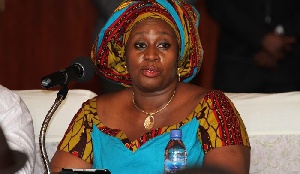For Radio 4 documentary Curvalicious, journalist and presenter Bridgitte Tetteh explores attitudes to female bodies in the black community.
Have you ever tried to buy a new school uniform when you’re a size 22? At the age of 14, I was put through that humiliation. The exasperated saleswoman explained to my parents that they would have to order my skirt in.
While I eventually managed to drop my extra weight, many other women in the African and Caribbean community seem to be losing that battle. The latest statistics show they are more likely to be obese than their white counterparts. While western women chase a slim size 8 physique, for many in the black community a curvy figure is seen as far more desirable. Having a big bum, small waist and large boobs is in vogue – think Beyoncé, Nicki Minaj or Kim Kardashian.
I’ve been investigating the factors behind this growing trend for a BBC Radio 4 documentary, Curvalicious. I’ve met many women who feel pressure to conform to an ideal so-called ‘black body’, with curves in all the right places. At my local gym, personal trainer Flo Veal often meets women who are confused about how weight loss actually works.
Contrary to popular belief it's not possible to choose which part of the body fat disappears from, but many women tell Flo: "I have to keep my hips and my thighs, I don’t want to lose weight – I just want to lose my stomach.” And many of them are happy to remain overweight to achieve this look.
Black men also have very strong ideas about what a desirable body shape looks like. I was shocked into silence when, in a very sweaty spin room at the same gym, I was told that anything bigger than a dress size 14 was too big and that if a black man "can’t lift them, they don’t want them”!
This obsession with black women’s bodies is nothing new and can be seen throughout history. In 1810, Sarah Baartman, an African slave, was taken from South Africa and paraded around Europe as part of a human carnival, all because she had a large bottom.
Dionne Taylor, lecturer in social sciences at Birmingham City University says Baartman’s story is still relevant today. Black women’s bodies are still being objectified and commodified in fashion, urban music and popular culture based on the same features that she was ogled for. Taylor isn’t sure such scrutiny is entirely negative, though: “Artists such as Nicki Minaj and Beyoncé have used it to their advantage with songs like [Destiny's Child's] Bootylicious, and Nicki saying it’s not about being skinny.”
It’s true that you don’t have to look very far to find a pop, reggae, soca or dancehall song that praises the “bumpa”, or big bum. Earlier this year, Lethal Bizzle released a song called Wobble, which begins with a tongue in cheek advert telling girls how to achieve the “dream” big bottom. And this narrative crosses racial lines. I met a young white woman, with a passion for all things Notting Hill Carnival, who is planning to go under the knife and have buttock implants to get what she refers to as a “black physique”. She’s aware of the risks – there have been well-documented cases of such surgery ending in death – but is prepared to take drastic action to get the look she wants.
I was shocked that this woman would put her herself through surgery and wondered how she would feel if the curvy trend were to end. She was very clear though that she didn’t think she’d ever regret her decision. It really brought home to me just how strong the desire for ‘curvalicious’ features has become.
Entertainment of Saturday, 1 October 2016
Source: bbc.co.uk
Lifestyle: What is a 'curvalicious' body?
 Bridgette Tetteh
Bridgette Tetteh












